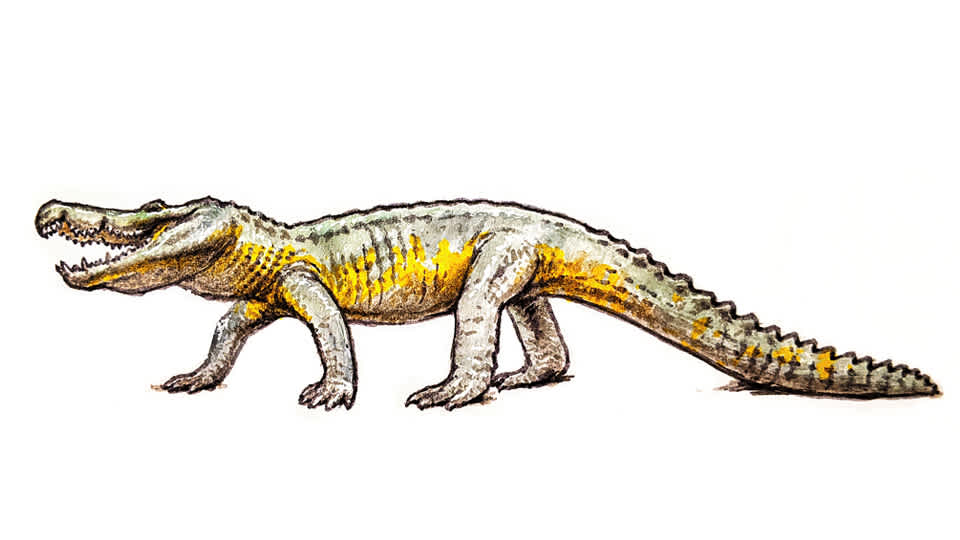
How to draw a Borealosuchus

Meet Borealosuchus, the midwestern crocodile
From tiny microbes to giant dinosaurs, science presents us with new ideas and knowledge that change our worldviews. One great way to understand science is through art.
Follow these guidelines to learn how to draw Borealosuchus formidabilis, an ancient crocodile relative that lived in the midwest 60 million years ago and was discovered by Bruce Erickson, a former Science Museum scientist.
Before you start drawing: Check out this video with Dr. Alex Hastings to learn more about the boreal crocodile. And remember; don’t worry about messing up or doing things differently from our instructions. These steps worked for us, but art is all about making your own creative choices.
1. Draw simple ovals to figure out the position of the animal. Try drawing a line for the ground to show where the croc would be walking along.

2. Use simple ovals to make the figure more detailed. Draw ovals where the jaws, neck, elbows, knees, and feet would be. You might notice that Borealosuchus kind of has long legs compared to crocs living today!
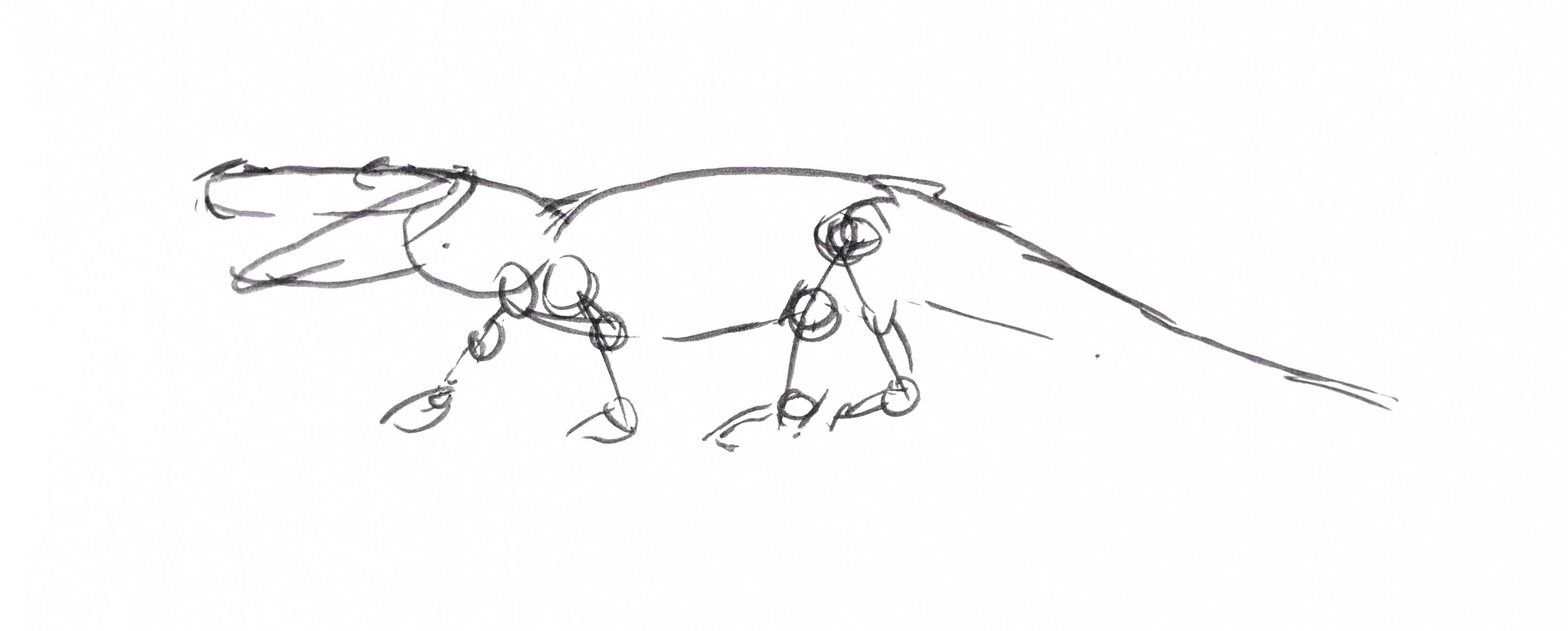
3. Add line details. Borealosuchus has a long, low, head, with its eyes sticking up. Its upper jaw sticks out farther than its lower jaw, and it has two notches in its upper jaw, where its teeth fit when its mouth is closed.
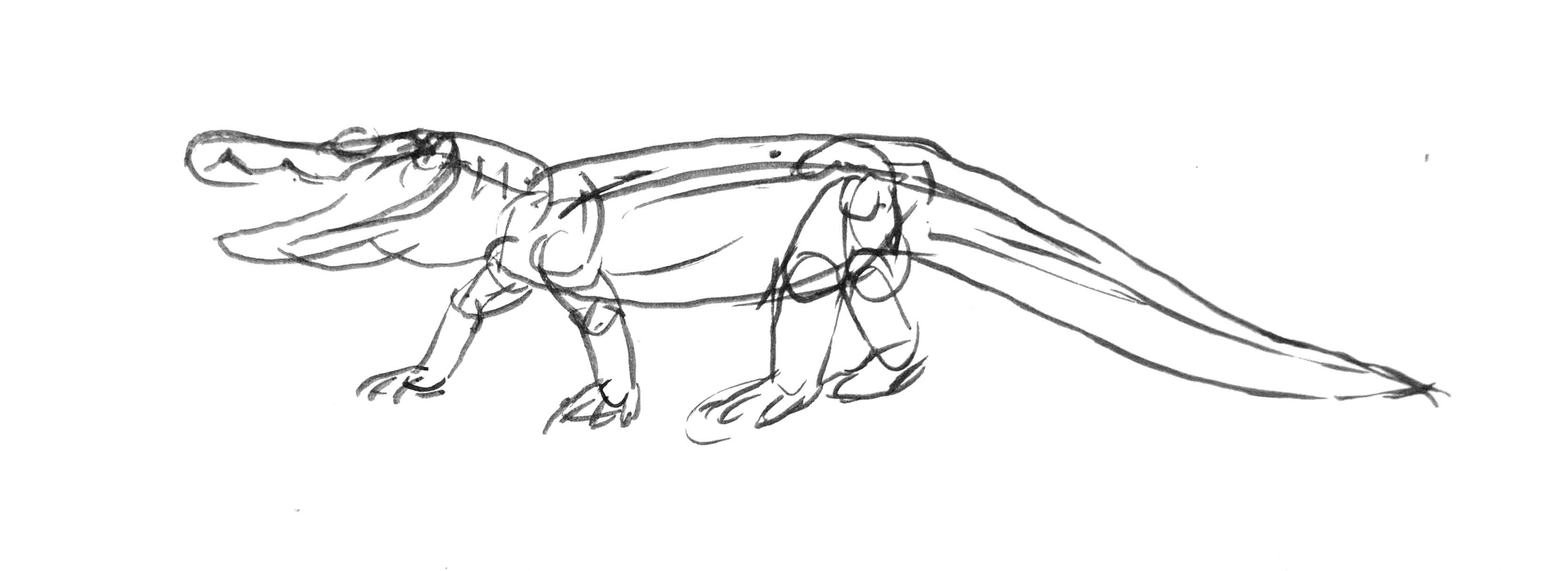
4. Add a body outline. Look at the skeleton to figure things out, like how many toes it had.
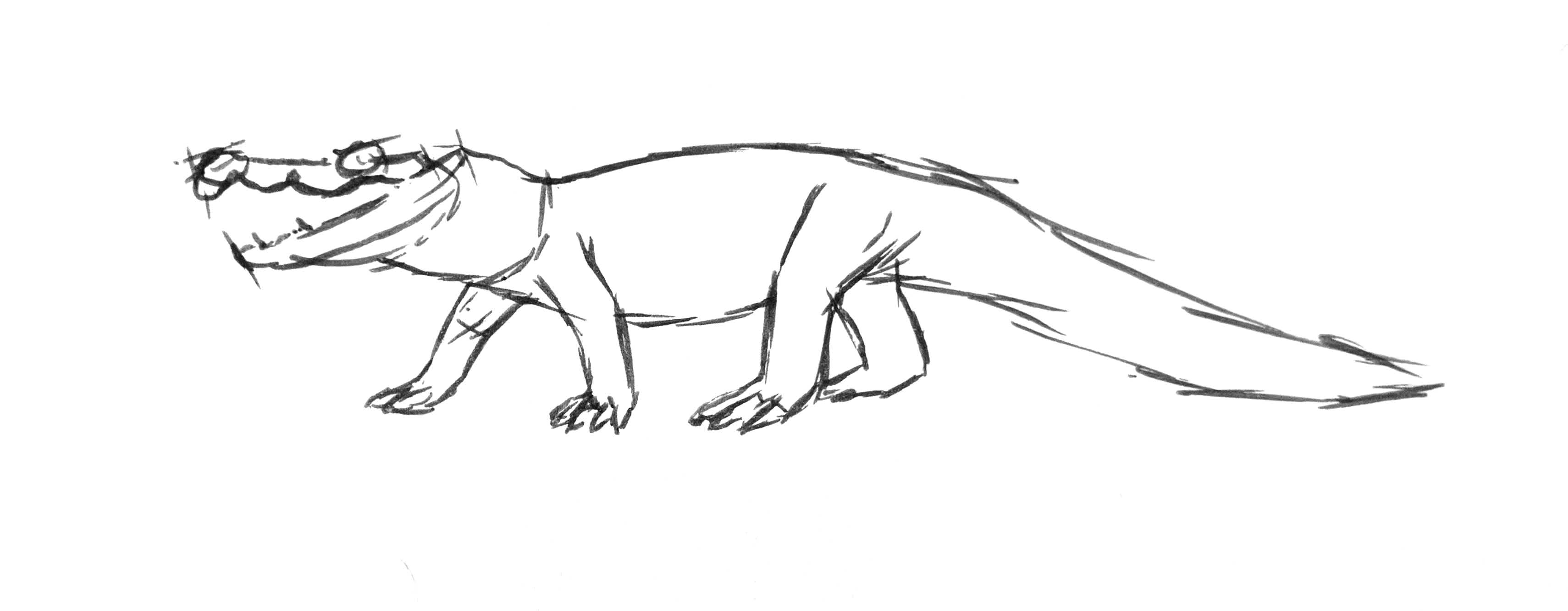
5. Add even more details. Like crocodiles today, Borealosuchus was scaly and had big scales all over its back, and running all the way down its tail.
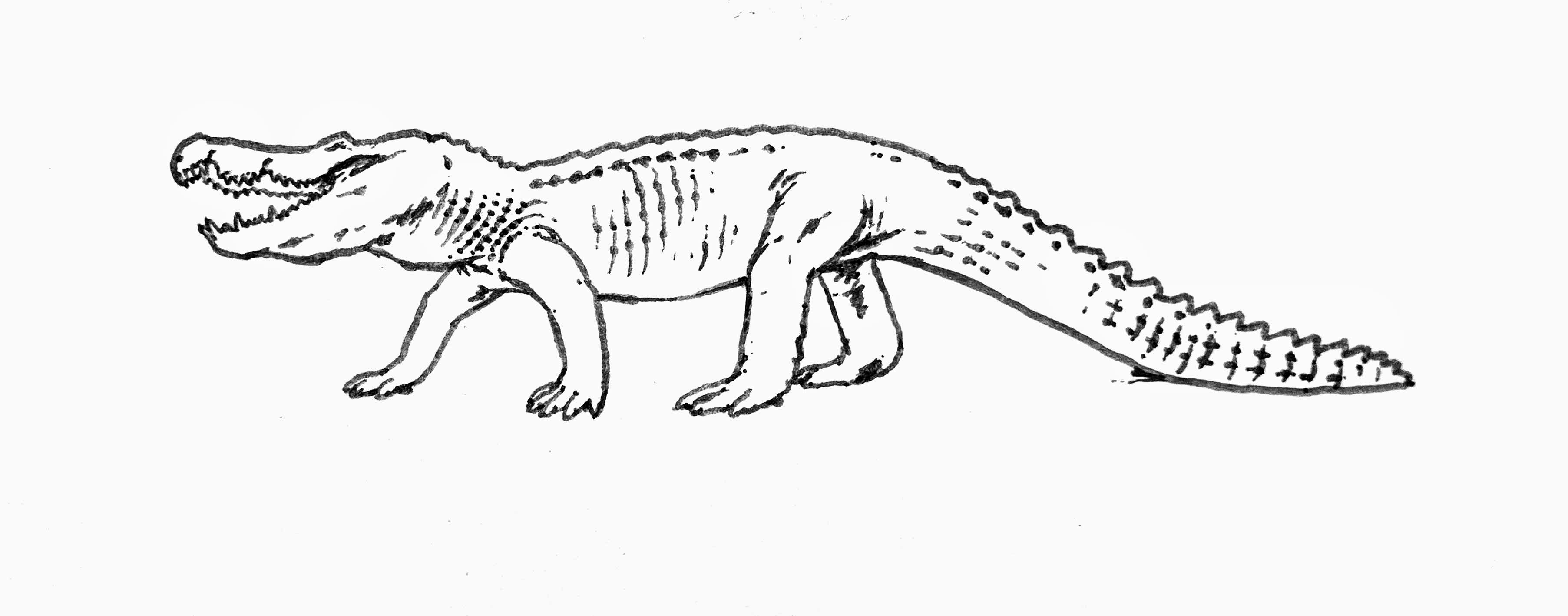
6. Finishing touches. Scientists aren't sure what color Borealosuchus was, so feel free to get creative. We used greens and yellows to match the swamp this big croc would've hunted in.
You did it! You drew Borealosuchus. If you want, you can add color like we did or try to draw it again. Stay tuned at smm.org/connect to find activities where art and science meet and share your creation with us on social media.